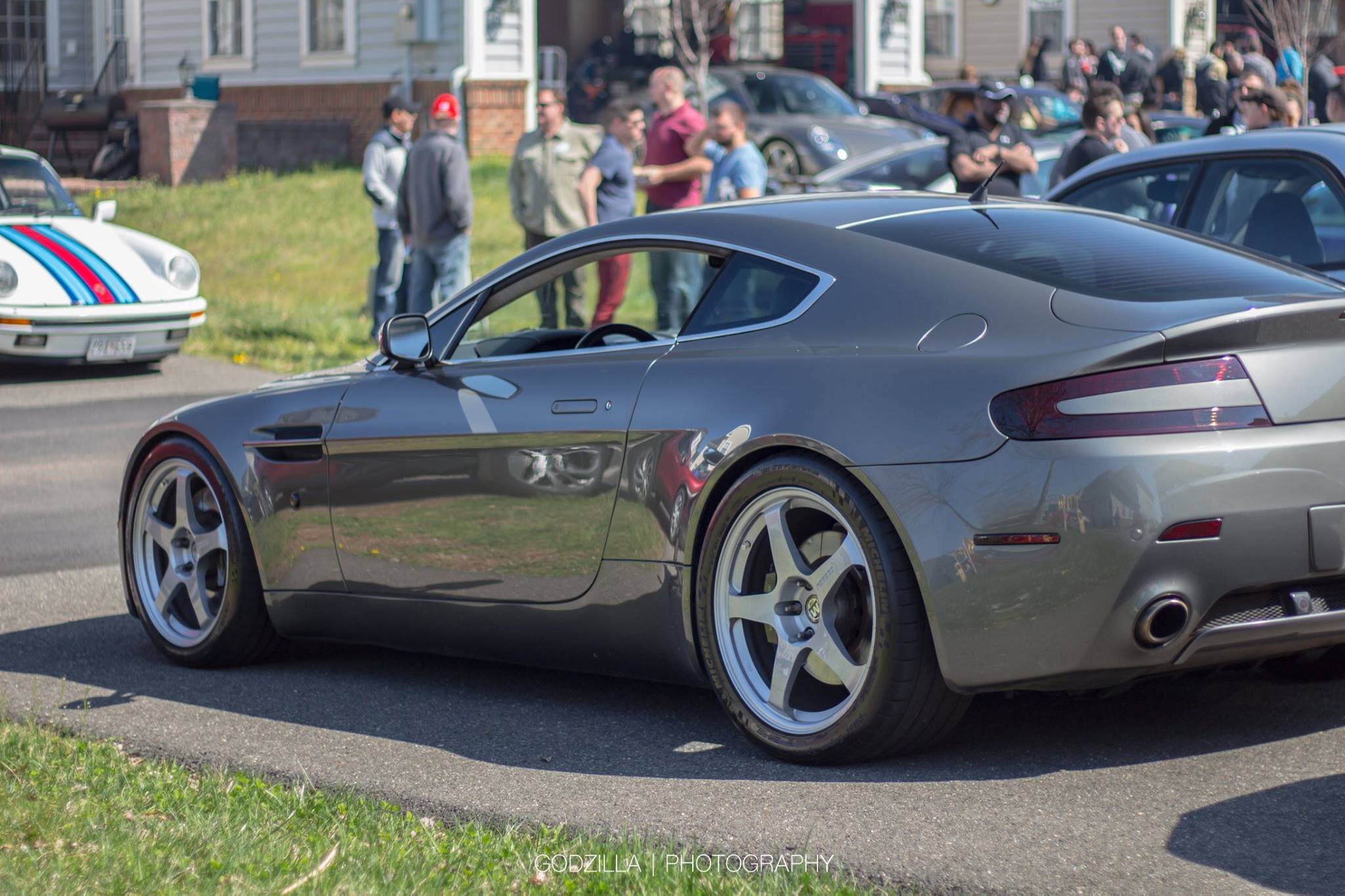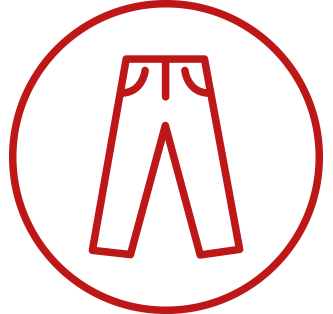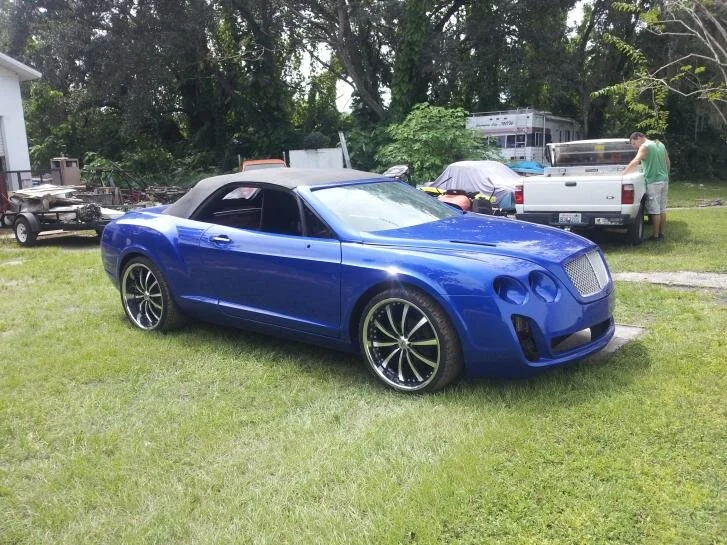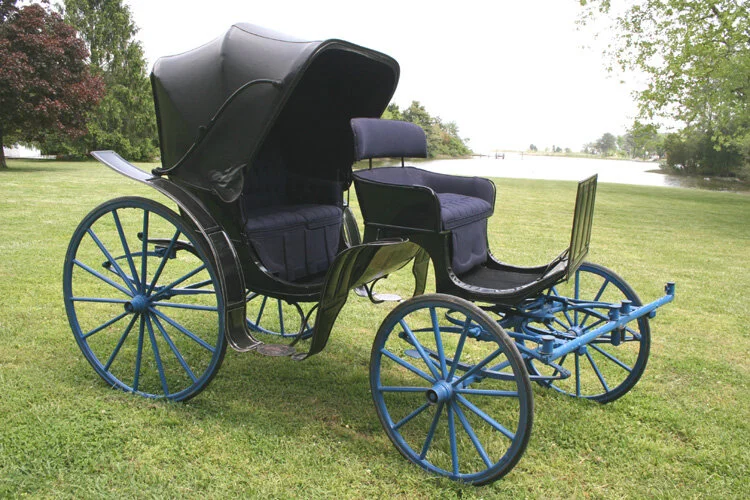
Put Some Dubs on It (or, You Know… Don’t)
This Article is based on a blog post from the original Redpants website. It was first posted on June 2, 2016.
Wheels are an important part of modifying a car. They make a statement, and they're the first thing people often see on a modified car. And, if anything, it's expected of an owner to swap the wheels if the car is at all modified. You could have the most ballin' engine build around, but if the wheels are stock... nobody is going to stop to appreciate anything else you've done. It's worth noting, though, that keeping factory wheels is a tried-and-true method for street racing "sleepers" to hide in plain sight.
It can be tricky picking out tasteful wheels. One thing I've noticed is that Aston Martin owners as a collective are generally not ones to approve gaudy or brash changes to an Aston. Modifications, especially wheels, need to look like they belong on the car. That's true for any car, but Aston owners as a group are far more particular. The extra scrutiny and criticism may be a turn off for people not accustomed to it.
But don’t let that turn you away from picking out a style you like. At the end of the day, it’s your car and nobody’s opinion matters but your own.
Having said that… Poorly chosen wheels can really ruin the look of a car. I warn in the About page that sometimes I might get a little personal, so here's fair warning: This Article includes quite a bit of my personal opinion and I might insult a few people. It isn't to be mean or hurtful. I'm just expressing my personal opinion on wheel selection. Let's start off with my biggest pet peeve.
Rollin’ on Rubber Bands
Wheels have three primary specifications: diameter, width, and offset. Diameter is the most obvious because it's the most visible to an onlooker. The one-inch incremental changes in diameter are subtle, but they add up quickly. A general rule of thumb is that the larger the diameter of the wheel, the thinner the sidewall of the tire. I can get into a whole discussion about tire specs, but let's stick to wheels. I'll just say that the thinner the sidewall, the less ride quality for the people inside the car and, at a certain point, reduced tire grip.
Visually, a thin sidewall looks silly. When a car looks like this:
(This is a random picture from the internet that I do not own.)
When I see oversized wheels with thin tires like the above, all I can see is this:
(This is another random picture from the internet that I do not own.)
Now look at this race car. Not just any race car, but an Aston Martin GTE which is quite relevant to us for obvious badge-centric reasons.
Look at that sidewall! It's thick. It's meaty. It's delicious. This is how sidewalls should be.
The opposite direction - smaller diameter wheels - gives you a thicker sidewall, but comes with two major concerns: styling is one, but far more importantly is brake clearance. Wheels need a diameter large enough to clear the brake rotors and calipers. Go with too small a diameter and it won't fit over the brakes.
Oh the Girth
Here's where things can get a little self-contradictory. Back when I first wrote this Article as a blog post for the original Redpants website, I stated that I don’t like the idea of putting super-wide tires on the V8 Vantage and pointed out that some people had gone as wide as 305’s in the rear. Fast forward a few years and… I put 305’s on the rear of my grey V8 Vantage.
I say this is a bit self-contradictory because I still stand by what I had originally said. I don’t think most people need super-wide tires on their V8 Vantage. The reason is because relatively few people actually push their cars hard enough to necessitate them.
This is more of a topic for my Article about tires, but tire sizes are a direct function of wheel sizes so the two overlap here. I’ll be talking about tires for a little bit here, but wheels and tires must be sized appropriately for each other, so the tire widths discussed imply correlated wheel widths.
To get a bit knit-picky real quick, let's go over the consequences of a wider wheel/tire package (all things being equal between two hypothetical sets of wheels and tires with the only difference being width).
First is cost. You're going to pay more for the larger setup. As of editing this Article (July 2021), a set of Michelin Pilot Sport 4S tires sized for my 19” Redpants fitment cost $134 less than the same tires sized for my 19” Widepants fitment. That’s not a huge amount extra, so it may not be a big deal. But I think it can actually a bad investment because you’re paying more for benefits you may not use.
Second is performance. The larger setup is going to be heavier, and that weight is going to be positioned at the worst place it can be: the outside edge of unsprung rotating mass. You're actually going to make your car slower in straight-line acceleration. If you’re tracking your car, then yes, the extra width is fantastic because it lets you carry much higher speeds in many situations. But if you’re not using your car in a way that makes use of the extra traction, then you’re actually hurting performance.
Third is the fun factor. Cars don’t need massive amounts of power and traction in order to be fun. In fact, having a lot of power and traction can make it more difficult to have fun without breaking the law. Some cars have such high performance thresholds that they aren’t much fun on the street, and pushing them at all can quickly result in fines or even jail time. One of the most fun cars I’ve ever driven was a 1985 Honda Civic Wagon with a manual transmission. I could flog the bejesus out of that car and not have to worry because it was so underpowered that it couldn’t hurt anything, and the low performance thresholds meant I could go ape-shit without worrying about the car getting away from me. Obviously, modern Aston Martins have far more performance than an old econo-box like that Honda, but the concept remains the same. Sticking with factory-sized tires can let you have more fun without having to push the car harder.
Having said all that, there’s still a case for going with wider wheels and tires. I first switched to them because I was doing a lot of track days and the extra grip made a huge difference. Later on I supercharged my car and that extra tire width once again came in handy as I needed it to put power down to the pavement. Some people want wider tires for the sake of bragging rights, but that’s a little silly, I think. Then again I’m the most humble person ever so bragging doesn’t make sense to me.
The Right Offset From the Outset
All else being equal, offset determines how far out your wheels stick compared to the body. If you have two sets of wheels that are the same in every way except for offset, one set of wheels will stick out (or be recessed further in) more than the other set.
If you look at the factory setup on an Aston, the wheels are actually tucked pretty far into the wheel wells. It's very common for owners to add spacers to bring the wheels further out - you can bring the fronts out by 15mm and the rears out by a whopping 25mm on the early V8 Vantages! Here’s what my car looked like with spacers and the OEM 7-spoke wheels:
Getting new wheels made should include a more suitable offset. You want to get the wheel (and more specifically, the tire) closer to "flush" with the body of the car without sticking out. Go too far and you'll end up like this:
(This is yet another random picture from the internet that I do not own.)
Getting offset right can be a bit tricky on an Aston. Our cars come with a large amount of rear camber. Some people don't take that into account when specifying their wheels - they just measure at some point up toward the top of the tires and go with it. The top ends up flush, but the bottom sticks out. If you want an extreme example of what I mean, look up "stance cars" and you'll have plenty of pics showing where I'm going with this.
It's my opinion that the offset (especially in the rear) needs to be a touch conservative. Just bring it in a few millimeters. That way the bottom of the tire will still be largely in line with the body and the wheels won’t stick out once camber is corrected.
Decisions, Decisions
Earlier I rambled quite a bit about choosing appropriate widths based on how the car is used. When a width is chosen, offsets are then based on those widths to come up with where the wheel is positioned in relation to the body of the car. To tie this together, here are three different sets of wheels.
All three sets of wheels shown above are different styles (obviously), but they’re all 19” diameter and they’re all different widths and with different offsets. Despite the widths and offsets being completely different for each set, they’re all within 1-2mm of each other as far as fitment is concerned in relation to the body of each car. The only reason they might look different at all is because each also has a different suspension setup and the tire sizes vary.
I’m using these three examples to show that width is only one aspect of wheel choice and there’s more involved that should be taken into account just as much.
I personally think that wheel sizes should be based on tire size, and tire size should be the first thing considered. Wheels are, after all, primarily meant to attach the tires to the car, and tires are incredibly important for both safety and performance. I think it’s completely backward to pick wheel sizes first and then try to figure out what tires will fit them. So, pick your tires first and then size your wheels accordingly.
Keeping it Simple
To make things as easy as possible for my customers, I have two pre-set sizes that I offer in custom-made wheels, like from BC Forged. My “Redpants fitment” keep the narrower factory-like sizing, while my “Widepants fitment” allow for much wider tires.
The silver BC Forged RT50 wheels seen on my cars are in the 19” Redpants fitment, which have the same width and diameter as the OEM 7-spoke wheels used on the early V8 Vantage, but with much better offsets. I used tires sized for the V8 Vantage S, which are an subtle improvement over the original 235/275 sizing.
The black BC Forged RZ05 wheels I had for a while were in my 19” Widepants fitment and used a 265/305 tire setup.
Even though the majority of wheels I sell are in either the Redpants or Widepants fitment, I can also do custom-spec sizing, which was the case on the BC Forged RZ39 wheels seen on one of my customers’ cars in the three-way comparison earlier in this Article.
Side note: The window sticker is for Akin Gear.
And, although I’ve shown a bunch of 19” wheels for easier comparison in this Article, I’ve also got 20” wheels covered and all the above information I’ve discussed applies. Here’s another customer’s car with BC Forged HCA210 wheels in 20” Widepants fitment.
‘Nuff Said
Hopefully all of my rambling has made sense and helped provide a bit of an idea of how wheels should be sized, and some of the things to consider. There are tons of options, and opinions will vary for everyone, so take what I’ve said with a grain of salt as much of it was my own opinion.
If you’re interested in a set of wheels for your car, Aston Martin or otherwise, please check out my Online Store or contact me!













